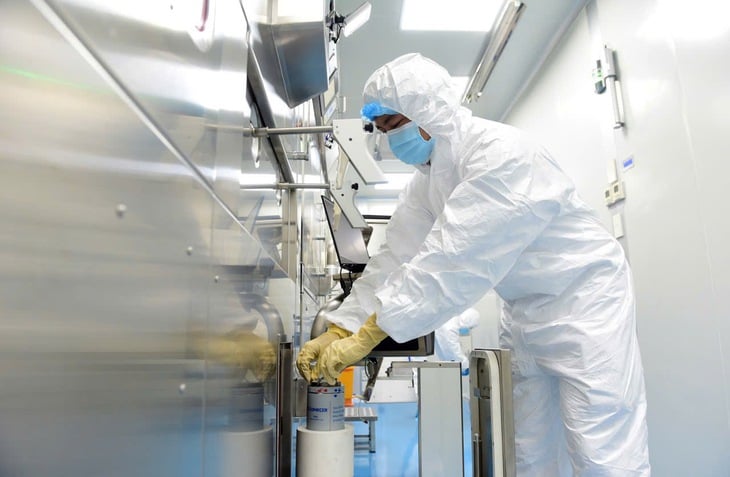
Production of radioactive injection containing Fluorin 18 flurodeoxy glucose (18F-FDG) used for PET/CT imaging in diagnosis and monitoring to support cancer treatment at Rang Dong Medical Joint Stock Company (Thu Duc City) - Photo: DUYEN PHAN
It is worth mentioning that previously, another large-scale radioactive isotope manufacturing facility under the public-private partnership model located in Ho Chi Minh City had to close due to regulatory issues. The disruption of the supply of radioactive drugs has been persistent for many years without a fundamental solution.
Patients have to wait 6 months!?
It is not until now that PET/CT scans - a modern technique that helps diagnose and detect cancer early at major hospitals in Ho Chi Minh City such as Cho Ray Hospital, Oncology Hospital, and Military Hospital 175 - have been interrupted due to a lack of supply of the radioactive drug 18F-FDG.
However, this time the interruption, as explained by Dr. Pham Thanh Viet (Deputy Director of Cho Ray Hospital), is to replace it with a new modern cyclotron, expected to be operational after 6 months.
And while the cyclotron at Cho Ray Hospital is shut down, there will be no radioactive isotope medicine provided to hospitals. This means that patients will have to find their own diagnosis or go to hospitals in the North or abroad for PET/CT scans.
Dr. Diep Bao Tuan - Director of the Oncology Hospital - said that the PET/CT system is used to diagnose, evaluate stages and monitor the effectiveness of treatment for diseases such as cancer, cardiovascular and neurological diseases.
When the only cyclotron in the South stopped operating, Ho Chi Minh City in particular and the South in general no longer had any operating PET/CT machines.
At the Oncology Hospital, there used to be more than 10 patients scheduled for PET/CT scans every day. The hospital is also making efforts to submit a draft report proposing public investment to the competent authorities to build a cyclotron located right at the Oncology Hospital.
Dr. Dang Huy Quoc Thinh - President of the Vietnam Palliative Care Medicine Association, former Deputy Director of Ho Chi Minh City Oncology Hospital - shared that every time the cyclotron stopped working, patients who needed PET-CT scans had to go to Hanoi to get them.
Not only that, some experts also said that when PET/CT scans are not possible, depending on each case, the doctor will prescribe other alternative solutions for the patient such as CT scans, MRI...
However, according to Dr. Quoc Thinh's analysis, MRI and CT cannot replace PET/CT because the accuracy of CT and MRI cannot be equal to PET/CT. "PET/CT is the pinnacle of accurate imaging diagnosis. MRI and CT can show images like lesions and tumors but are not specific to whether they are benign or malignant, but when taking a PET/CT scan, they can be seen very clearly" - Dr. Thinh said.
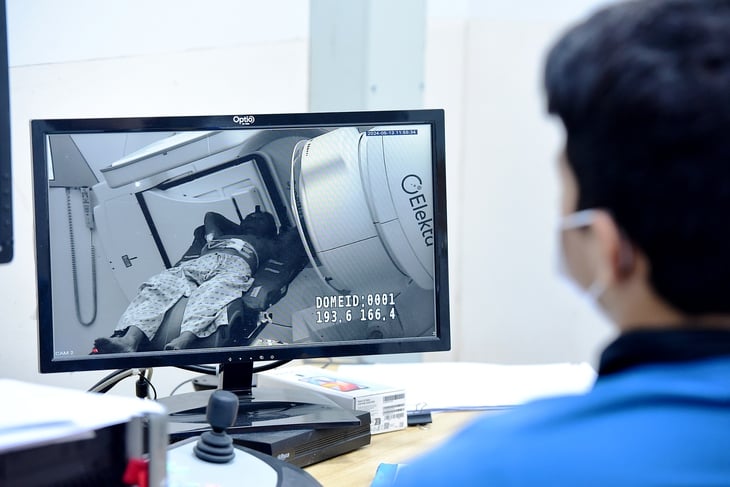
Medical staff take PET/CT scan for patient - Photo: DUYEN PHAN
The sad end of a radioactive furnace
According to Tuoi Tre 's investigation, in addition to the cyclotron at Cho Ray Hospital, there used to be a radioactive medicine production unit in the South, Rang Dong Medical Joint Stock Company in Linh Xuan (Thu Duc City). In 2019, this company began testing the 18F-FDG medicine production reactor in Ho Chi Minh City with the hope of sharing the burden with Cho Ray Hospital.
This production line is located in the campus of the Center for Research and Development of Radiation Technology (Vinagamma, under the Vietnam Atomic Energy Institute). By 2022, the inspection team of the Ministry of Science and Technology concluded that the company's operations were not in accordance with the Law on Management and Use of Public Assets. This conclusion caused the entire production process to be suspended "indefinitely".
Although over the next two years, the Vietnam Atomic Energy Institute, the Ho Chi Minh City Department of Health and Rang Dong Company repeatedly requested to remove the obstacles, all efforts fell into silence. The Ministry of Science and Technology did not provide any clear solution.
By the end of 2024, Rang Dong will be forced to relocate all equipment, hand over the factory, and officially close the door to producing the second source of radioactive medicine in the South. And currently, the whole country has only two licensed 18F-FDG production facilities, both located in Hanoi.
"It is impossible to transport this short-lived drug to Ho Chi Minh City," experts said. This means the South is completely "empty-handed" in terms of supply, and in the end, patients continue to suffer.
Speaking to Tuoi Tre on June 21, the leader of the Vietnam Atomic Energy Institute said that the scientific and technical cooperation contract between the unit and Rang Dong Medical Joint Stock Company has been officially "liquidated" and the company has also moved the production furnace out of the institute's premises. "Currently, a unit is building a production furnace, expected to be operational by the end of this year," he said.
Sharing more with Tuoi Tre, Mr. Nguyen Minh Son, director of Rang Dong Medical Joint Stock Company, said that by 2022, the Ministry of Science and Technology requested to stop operations due to the use of public assets.
During the two years of stopping production of radioactive drugs, the company still had to operate daily to prevent machinery breakdown. Each month, maintenance costs were about 320 million VND.
Due to the heavy maintenance costs, the company could not wait until the problem was resolved by the end of 2024 and had to leave with a loss of billions of dong. Mr. Son also said that the company is currently building a radioactive production plant in Long An, expected to be completed by the end of this year.
"After completion, we will have to carry out related procedures for licensing radioactive production and licensing in the pharmaceutical sector to supply to hospitals in the South," Mr. Son informed. Previously, at the old factory, this company also had to spend 4 years to complete all procedures, documents, and issue drug circulation registration numbers.
Temporarily use other screening methods
Speaking to Tuoi Tre, the leader of the Department of Medical Examination and Treatment Management (Ministry of Health) said that they had received information about the cyclotron that produces radiation used in PET/CT scans to diagnose cancer at Cho Ray Hospital being interrupted due to damage. The hospital also said that the downtime to replace the new cyclotron is expected to be about 6 months.
"The department is currently asking the hospital to provide a specific report on the situation. For now, the hospital can guide diagnosis using other methods such as CT scan, MRI scan...", the department's leader said.
Source: https://tuoitre.vn/lo-san-xuat-thuoc-chup-pet-ct-o-phia-nam-dung-hoat-dong-benh-nhan-va-benh-vien-deu-be-tac-20250622074615947.htm











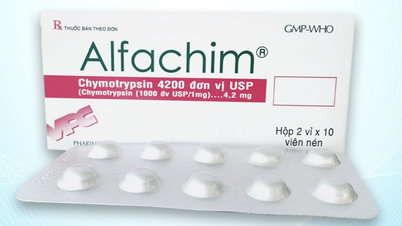
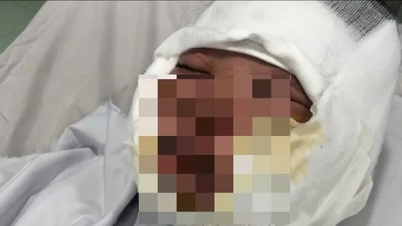

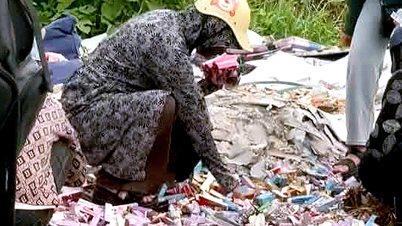


































![[Maritime News] Wan Hai Lines invests $150 million to buy 48,000 containers](https://vphoto.vietnam.vn/thumb/402x226/vietnam/resource/IMAGE/2025/6/20/c945a62aff624b4bb5c25e67e9bcc1cb)









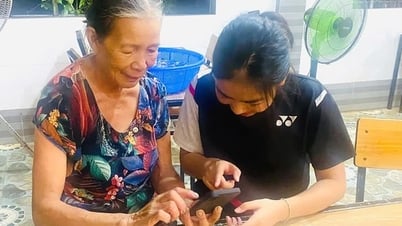




![[Infographic] Party Committee of the Ministry of Culture, Sports and Tourism: Marks of the 2020 - 2025 term](https://vphoto.vietnam.vn/thumb/402x226/vietnam/resource/IMAGE/2025/6/22/058c9f95a9a54fcab13153cddc34435e)






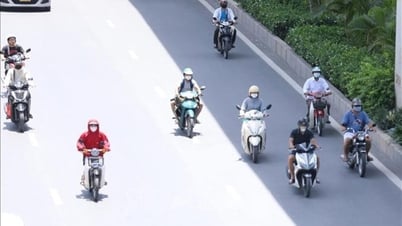



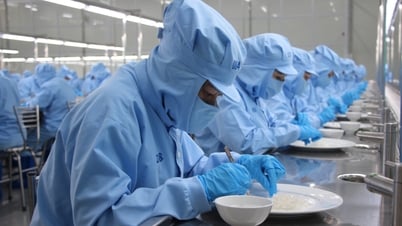













Comment (0)